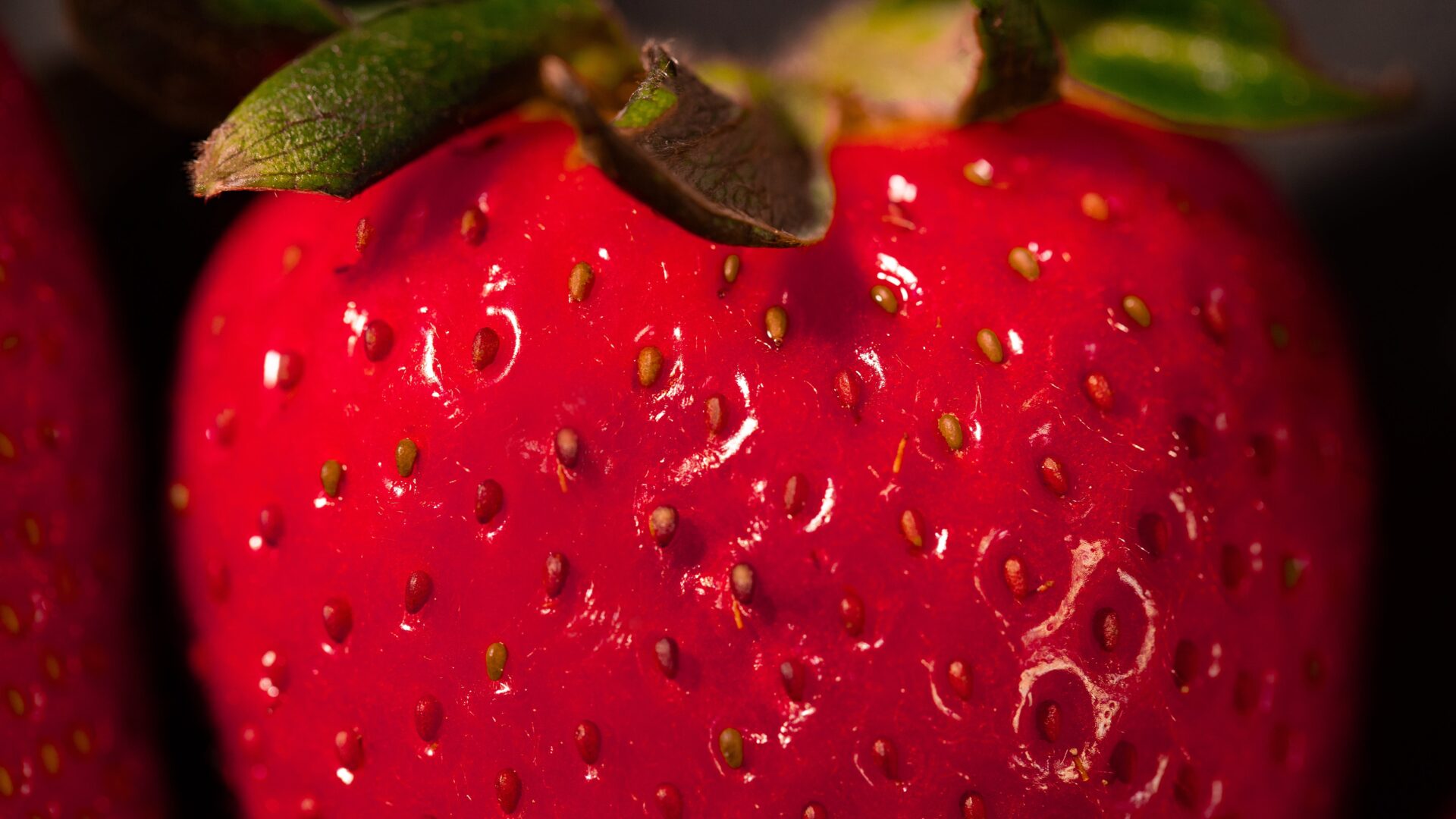Strawberries are one of the most popular fruits in the world and many people enjoy growing them in their gardens. A common question that gardeners have is how long does it take for strawberry seeds to germinate? This article will discuss the length of time it takes for strawberry seeds to germinate, as well as other factors that affect the process.It typically takes between 5-21 days for strawberry seeds to germinate. This can vary depending on the type of soil, moisture and temperature.
Factors that Affect Strawberry Seed Germination
The success of strawberry seed germination is determined by a variety of factors. Temperature, moisture, soil pH, and light are the most important factors. Each factor must be taken into consideration when planting strawberry seeds in order to achieve optimal results.
Temperature
Temperature plays an important role in strawberry seed germination. For successful germination, the soil should be kept between 65°F and 75°F. If the temperature is too low or too high, the seeds may not germinate at all. It is also important to note that temperatures over 80°F will kill newly sprouted seedlings.
Moisture
Proper moisture levels are essential for successful strawberry seed germination. The soil should be kept moist but not overly wet, as this can lead to rotting or disease. If the soil dries out too much, the seeds will not germinate and will eventually die off. Additionally, it is important to ensure that there is good drainage in the area where you are planting your seeds to prevent waterlogging or soggy conditions that can damage your plants.
Soil pH
The pH level of the soil you plant your strawberry seeds in will also play an important role in their success or failure. Strawberry plants prefer a slightly acidic soil with a pH between 5.8 and 6.5 for optimal health and growth. If the pH level of your soil is too high or low, you can adjust it by adding sulfur or lime to bring it back into balance before planting your seeds.
Light
Strawberry plants require plenty of sunlight for optimal growth and development. The best way to ensure your plants get enough light is by planting them in an area that receives at least six hours of direct sunlight each day. In addition to direct sunlight, indirect light can also help boost growth and production of fruit on mature plants as well as aid in healthy root development during seed germination stage.
By taking into account these essential factors for successful strawberry seed germination, you can ensure your plants have everything they need for healthy growth and production of delicious fruits!
Strawberry Seeds Requirements for Germination
Strawberry seeds require a moist environment and need to be kept at a temperature between 18 and 30 degrees Celsius (65 and 85 degrees Fahrenheit) in order to germinate. They also require light for germination, so they should be placed in a sunny area or exposed to artificial light. To provide the best environment for the seeds, they should be planted in well-drained soil that is rich in organic matter. The soil should also be kept moist but not soggy, as too much water can lead to fungal diseases. Once the seedlings have sprouted, they should be thinned to allow for adequate air circulation and space for the plants to grow.
In addition to providing an ideal environment, there are other requirements that must be met for strawberry seeds to germinate successfully. The seeds must be fresh and viable; old or dead seeds are unlikely to germinate. The pH of the soil should also be between 5.5 and 6.8, as this will help ensure that the plants receive all the nutrients they need from the soil. Finally, strawberry seeds need a period of cold stratification before they can be planted; this involves storing them in a cool place for several weeks before planting.
By meeting all of these requirements, gardeners can create an ideal environment for their strawberry plants and ensure successful germination of their seeds.
How to Plant Strawberry Seeds for Maximum Germination
Planting strawberry seeds is a great way to ensure a plentiful harvest of juicy, delicious strawberries. However, it’s important to take the right steps to ensure that your seeds germinate and grow into healthy plants. By following these tips, you’ll be able to achieve the best possible germination rate for your strawberry seeds.
The first step is to choose the right type of soil for your strawberry plants. A well-draining, nutrient-rich soil is best for maximum germination rates. If you don’t have access to such soil, you can create it yourself by mixing equal parts compost, peat moss, and sand. This will help ensure that the strawberry seeds get enough water and nutrients for optimal growth.
The next step is to prepare the soil by removing any weeds or other debris from the area where you will be planting the seeds. Once your soil is ready, spread a thin layer of compost over the top and use a shovel or rake to work it into the top few inches of soil. This will help provide nutrients for your seedlings as they begin to grow.
Once you have prepped the soil, it’s time to plant your strawberry seeds. Place each seed about an inch apart in rows or clusters depending on how much space you have available. Make sure that each seed is at least ¼ inch below the surface of the soil so that they can receive enough moisture for germination.
Finally, be sure to keep your strawberry plants well watered during their early stages of growth as this will help maximize their germination rate. Keep an eye out for any signs of disease or pests and take action if necessary. With proper care and attention, you should see healthy strawberry plants emerge within a few weeks!
Testing the Viability of Strawberry Seeds
Testing the viability of strawberry seeds is a simple process that can be done at home. To determine if your strawberry seeds are viable, you will need to prepare some moist paper towels and a zip-top bag. Begin by dampening two paper towels with warm water and then placing them in the zip-top bag. Place your strawberry seeds on top of the paper towels, then seal the bag. Place the sealed bag in a warm location where it can remain undisturbed for several days. After four or five days have passed, check to see if any of your strawberry seeds have sprouted. If they have, this indicates that your seeds are viable and can be planted.
If none of your strawberry seeds have sprouted after five days, they may still be viable. To test this, remove the paper towels from the zip-top bag and place them in a shallow bowl filled with warm water. Let the paper towels soak for several hours before checking for signs of germination. If any of the seeds begin to sprout while soaking in water, this indicates that they are viable and can be planted.
If none of your strawberry seeds sprout after soaking in water or after being placed on moistened paper towels, chances are they are not viable and will not grow when planted. It’s important to remember that even if some of your seeds do appear to be viable, there is no guarantee that all of them will germinate and produce plants when planted in soil. Testing for viability before planting is important so you don’t waste time and energy on dead or unviable seeds.

Pros of Planting Strawberry Seeds
Planting strawberry seeds is a great way to start your own strawberry patch at home. It’s an easy and inexpensive way to get started and you can grow many varieties of strawberries, depending on your preference. The main advantage of planting strawberry seeds is that you can get a head start on the growing season and have fresh strawberries ready to harvest in no time. Additionally, strawberries grown from seed tend to be healthier than those purchased from a store, as they are free from pesticides and other chemicals. Finally, growing your own strawberries gives you the opportunity to experiment with different types of soil and climate conditions, allowing you to create your own unique strawberry patch.
Cons of Planting Strawberry Seeds
The main disadvantage of planting strawberry seeds is that it takes time for them to germinate and grow. Depending on the variety you choose, it could take several weeks before you see any progress. Additionally, it’s important to keep in mind that some varieties are more difficult to cultivate than others, so it’s important to research which variety will work best for your growing conditions. Finally, there is always the risk that the seeds may not survive if they are exposed to too much heat or cold or if they are planted too deep in the soil.
The Benefits of Growing Strawberries from Seed
Growing strawberries from seed is a great way to start your strawberry patch. It is an affordable and enjoyable way to get started, and it offers many benefits. Growing strawberries from seed is also an excellent way to ensure you have healthy, strong plants that will produce a bountiful crop of sweet strawberries. Here are some of the benefits of growing strawberries from seed:
The first benefit of growing strawberries from seed is cost savings. Purchasing seeds for growing strawberries can be much less expensive than purchasing nursery plants. Plus, you can purchase a variety of different types of strawberry seeds to find the one that best suits your needs and tastes.
Another benefit of growing strawberries from seed is that you can control the growth environment better than if you were purchasing nursery starters. When you grow your own strawberry plants, you know exactly what type of soil is used and what type of fertilizer has been applied. This gives you more control over the growth process.
Finally, when you grow your own strawberry plants from seed, you can make sure they are free from diseases and pests that may be present in store-bought plants. When growing your own plants, it’s easier to identify any potential issues before they become a problem.
Overall, there are many benefits to growing strawberries from seed that make it a great option for any gardener looking to start their own patch. It’s an affordable way to get started and gives gardeners more control over their growth environment while ensuring their plants are healthy and disease-free.
The Best Time of Year for Planting Strawberry Seeds
Planting strawberry seeds is an easy and rewarding gardening activity. While you can purchase live plants from your local nursery, starting from seed gives you the opportunity to choose from a wider variety of varieties and can be much more affordable. When it comes to planting strawberry seeds, timing is important. Depending on where you live, the best time to plant strawberry seeds may vary.
In general, the best time to plant strawberry seeds is in late winter or early spring. This gives the plants plenty of time to grow and develop before the summer heat arrives. In regions with mild winters, fall planting is also an option. For areas with cold winters, it’s best to wait until temperatures start to rise in late winter or early spring before planting your seeds.
When planting your strawberry seeds, make sure that you prepare your soil properly and provide plenty of water for your plants. Seeds should be planted at a depth of about one-eighth inch into well-draining soil in a sunny spot that gets at least six hours of direct sunlight each day. Keep the soil moist but not soggy as this can cause the roots to rot and lead to disease and pest problems.
Finally, when planting strawberry seeds it’s important to choose varieties that are suited for your specific climate and growing conditions. Some varieties are more tolerant of cold temperatures than others so be sure to research what will work best in your area before purchasing any seeds. With proper timing and preparation, your strawberry plants should thrive and produce delicious fruit all summer long!

Conclusion
Strawberry seeds can take anywhere from 5 to 30 days to germinate, depending on the variety and conditions of the seed environment. Generally, if kept in a moist and warm environment, the seeds should germinate within 10 to 15 days. However, it is important to keep in mind that some strawberry varieties may require more time before they sprout. Additionally, it is important to make sure that the temperature and moisture are at an optimal level for the seeds to germinate properly.
Overall, strawberry seeds require an adequate amount of warmth and moisture in order to germinate effectively. While it can take up to 30 days for some varieties of strawberries to germinate, most should sprout within 10-15 days when given the right conditions. It is important for gardeners to understand this process in order to ensure successful growth of their strawberry plants.



